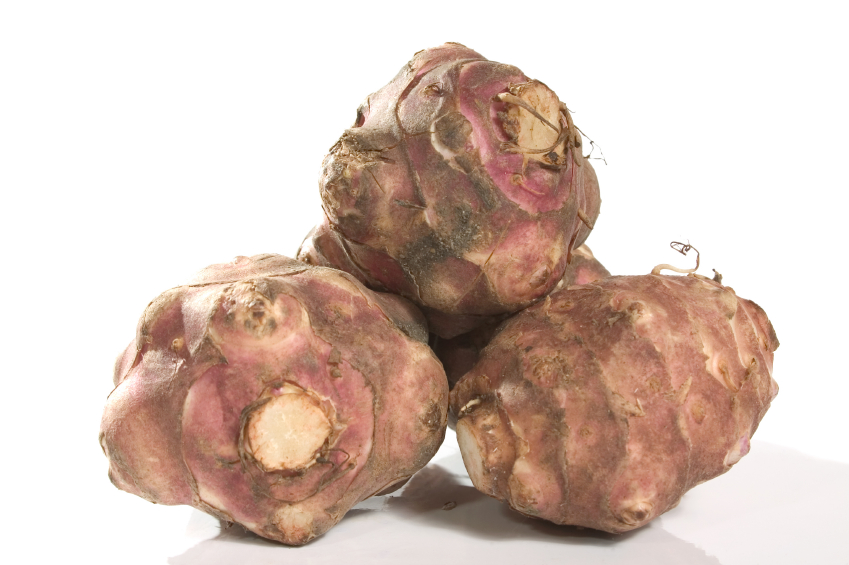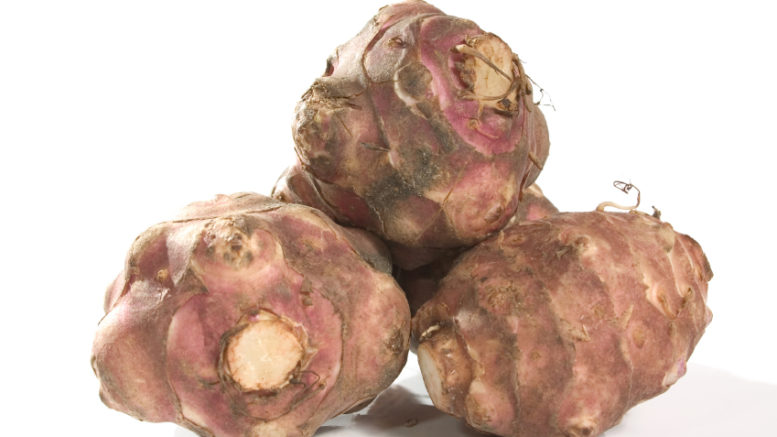
Pronounce it: jer-oo-sa-lem ar-tee-choke
This vegetable is not truly an artichoke but a variety of sunflower with a lumpy, brown-skinned tuber that often resembles a ginger root. Contrary to what the name implies, this vegetable has nothing to do with Jerusalem but is derived instead from the Italian word for sunflower, girasole.
The white flesh of this vegetable is nutty, sweet and crunchy and is a good source of iron.
Availability
At their best from November to March.
Choose the best
Although Jerusalem artichoke’s knobbly by nature, look for less knobs to save waste when peeling.
Skins should be pale brown without any dark or soft patches and the artichokes should look firm and fresh not soft or wrinkled.
Prepare it
The artichoke flesh will discolour if exposed to air so place the peeled vegetable in a bowl of acidulated water until ready to cook. Because they are so knobbly it is easier to peel artichokes after boiling.
Store it
If they are stored in a cool and dark place they will keep well for up to 10 days.
Cook it
Jerusalem artichokes can be cooked in much the same way as potatoes or parsnips and are excellent roasted, sautéed or dipped in batter and fried, or puréed to make a delicious soup.
Alternatives
Try salsify, parsnip or medium potato.

Be the first to comment on "Jerusalem artichoke"